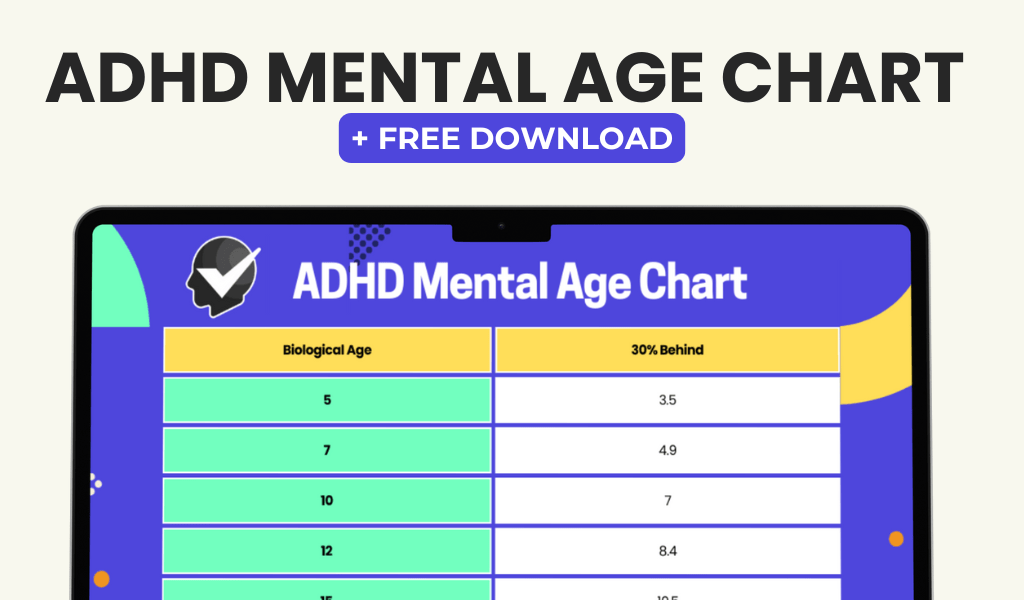Demand avoidance in ADHD refers to a pattern of behavior where individuals with ADHD actively resist or avoid tasks, activities, or requests that they perceive as demanding or challenging. This can manifest as procrastination, defiance, or even complete refusal to comply with demands. It is important to understand demand avoidance in ADHD because it can significantly impact daily functioning and relationships. By understanding the underlying factors contributing to demand avoidance, individuals with ADHD and their loved ones can develop strategies to manage and overcome these challenges.
Key Takeaways
- Demand avoidance is a common behavior in individuals with ADHD, characterized by resistance to tasks or activities perceived as demanding or overwhelming.
- ADHD symptoms include inattention, hyperactivity, and impulsivity, and diagnosis is typically made through a comprehensive evaluation by a healthcare professional.
- Anxiety can exacerbate demand avoidance in individuals with ADHD, leading to avoidance of tasks and activities that trigger anxiety.
- Sensory processing issues can also contribute to demand avoidance, as individuals with ADHD may be hypersensitive to certain stimuli.
- Testing for ADHD involves a combination of clinical interviews, behavioral observations, and standardized assessments, and can help identify underlying factors contributing to demand avoidance.
Understanding ADHD: Symptoms and Diagnosis
ADHD, or Attention-Deficit/Hyperactivity Disorder, is a neurodevelopmental disorder characterized by persistent patterns of inattention, hyperactivity, and impulsivity that interfere with daily functioning and development. The symptoms of ADHD can vary from person to person but generally include difficulty paying attention, being easily distracted, forgetfulness, impulsivity, restlessness, and difficulty staying organized.
Diagnosing ADHD involves a comprehensive evaluation that includes gathering information from multiple sources such as parents, teachers, and the individual themselves. The evaluation may include interviews, questionnaires, observations, and psychological testing. The diagnostic criteria for ADHD are outlined in the Diagnostic and Statistical Manual of Mental Disorders (DSM-5), which is widely used by mental health professionals.
The Role of Anxiety in Demand Avoidance
Anxiety can play a significant role in demand avoidance in individuals with ADHD. Many individuals with ADHD experience heightened levels of anxiety due to the challenges they face in daily life. The fear of failure or not meeting expectations can lead to avoidance behaviors as a way to cope with anxiety.
For example, a student with ADHD may avoid starting a school project because they are anxious about not being able to complete it on time or meet the teacher’s expectations. Similarly, an adult with ADHD may avoid taking on new responsibilities at work because they fear making mistakes or not being able to handle the added workload. In both cases, demand avoidance is driven by anxiety and the desire to avoid potential negative outcomes.
The Impact of Sensory Processing Issues on Demand Avoidance
| Metrics | Impact |
|---|---|
| Increased anxiety | High |
| Difficulty with transitions | High |
| Challenges with social interactions | High |
| Difficulty with self-regulation | High |
| Decreased academic performance | Medium |
| Increased risk of behavioral issues | Medium |
| Difficulty with daily living activities | Medium |
| Increased risk of mental health issues | Low |
Sensory processing issues can also contribute to demand avoidance in individuals with ADHD. Many individuals with ADHD have sensory sensitivities or difficulties processing sensory information. This can make certain tasks or activities overwhelming and uncomfortable, leading to avoidance behaviors.
For example, a child with ADHD may avoid participating in team sports because the noise and chaos of the environment overwhelm their sensory system. Similarly, an adult with ADHD may avoid going to crowded places or social events because the sensory overload is too overwhelming. In both cases, demand avoidance is driven by the need to protect oneself from sensory overload and discomfort.
Testing for ADHD: What to Expect
When seeking a diagnosis for ADHD, individuals can expect a comprehensive evaluation that includes various types of tests and assessments. These tests are designed to gather information about the individual’s symptoms, functioning, and overall well-being.
The evaluation may include interviews with the individual and their family members, questionnaires that assess ADHD symptoms and related difficulties, observations of the individual’s behavior in different settings (e.g., home, school, work), and psychological testing to assess cognitive abilities and rule out other possible causes of the symptoms.
It is important to note that there is no single test that can definitively diagnose ADHD. Instead, the diagnosis is based on a thorough evaluation of the individual’s symptoms and functioning using multiple sources of information.
Strategies for Managing Demand Avoidance in ADHD

Managing demand avoidance in ADHD requires a multi-faceted approach that addresses the underlying factors contributing to this behavior. Here are some practical strategies that can help:
1. Break tasks into smaller steps: Breaking down tasks into smaller, more manageable steps can make them feel less overwhelming and more achievable. This can help individuals with ADHD overcome the tendency to avoid tasks that seem too demanding.
2. Provide clear instructions and expectations: Clearly communicating instructions and expectations can help individuals with ADHD understand what is being asked of them and reduce anxiety. Providing visual aids or written instructions can also be helpful.
3. Use positive reinforcement: Rewarding and acknowledging small achievements can motivate individuals with ADHD to engage in tasks and activities that they may otherwise avoid. Positive reinforcement can be in the form of verbal praise, small rewards, or privileges.
4. Create a structured routine: Establishing a consistent routine can provide individuals with ADHD a sense of predictability and control, which can help reduce anxiety and improve task engagement. Having a set schedule for daily activities, including designated times for work, breaks, and leisure activities, can be beneficial.
5. Seek support from professionals: Working with mental health professionals who specialize in ADHD can provide individuals with ADHD and their families with valuable guidance and support. These professionals can help develop personalized strategies for managing demand avoidance and address any underlying issues contributing to this behavior.
The Benefits of Cognitive Behavioral Therapy for ADHD
Cognitive Behavioral Therapy (CBT) is a therapeutic approach that has been shown to be effective in managing demand avoidance in individuals with ADHD. CBT focuses on identifying and changing negative thought patterns and behaviors that contribute to anxiety and avoidance.
In the context of demand avoidance, CBT can help individuals with ADHD challenge their negative beliefs about their abilities and develop more adaptive coping strategies. For example, a person with ADHD who believes they are incapable of completing a task may work with a therapist to challenge this belief and develop a more realistic and positive self-perception.
CBT can also help individuals develop problem-solving skills, improve time management, and enhance organizational skills, all of which can contribute to better task engagement and reduced demand avoidance.
The ADHD Workbook: A Tool for Managing Demand Avoidance
An ADHD workbook is a valuable tool for managing demand avoidance in ADHD. These workbooks typically contain exercises, activities, and worksheets that help individuals with ADHD develop skills and strategies to overcome challenges related to demand avoidance.
Some examples of exercises and activities that may be included in an ADHD workbook include:
– Goal-setting exercises: These exercises help individuals with ADHD identify specific goals and develop a plan to achieve them. This can help increase motivation and task engagement.
– Time management worksheets: These worksheets help individuals with ADHD develop strategies for managing their time more effectively. This can be particularly helpful in overcoming procrastination and avoiding tasks.
– Cognitive restructuring exercises: These exercises help individuals challenge negative thoughts and beliefs that contribute to demand avoidance. By replacing negative thoughts with more positive and realistic ones, individuals can reduce anxiety and improve task engagement.
The ADHD Audiobook: A Convenient Resource for Learning
An ADHD audiobook can be a convenient resource for learning about demand avoidance in ADHD. Audiobooks provide an accessible way to access information and learn about strategies for managing demand avoidance while on the go.
Some topics that may be covered in an ADHD audiobook include:
– Understanding the symptoms and challenges of ADHD
– Exploring the impact of demand avoidance on daily functioning
– Learning practical strategies for managing demand avoidance
– Gaining insights from personal stories and experiences of individuals with ADHD
– Exploring the role of therapy and other interventions in managing demand avoidance
Moving Forward with a Better Understanding of Demand Avoidance in ADHD
In conclusion, demand avoidance in ADHD is a complex behavior that can significantly impact daily functioning and relationships. By understanding the underlying factors contributing to demand avoidance, individuals with ADHD and their loved ones can develop strategies to manage and overcome these challenges.
It is important to seek professional help if you suspect you have ADHD and are experiencing demand avoidance. Mental health professionals who specialize in ADHD can provide guidance, support, and evidence-based interventions to help individuals with ADHD thrive.
Resources for further learning and support include books, workbooks, audiobooks, support groups, and online communities dedicated to ADHD. By taking proactive steps to understand and manage demand avoidance, individuals with ADHD can lead fulfilling and successful lives.
If you’re interested in learning more about demand avoidance in ADHD, you might find this article on ADHD Testing website helpful. It explores the concept of demand avoidance in individuals with ADHD and provides insights into how it can impact their daily lives. To delve deeper into this topic, check out the article here.
FAQs
What is demand avoidance ADHD?
Demand avoidance ADHD is a condition that is characterized by a persistent pattern of avoiding or resisting demands, requests, and expectations from others. It is also known as pathological demand avoidance (PDA) and is considered a subtype of autism spectrum disorder (ASD).
What are the symptoms of demand avoidance ADHD?
The symptoms of demand avoidance ADHD include difficulty with social communication, sensory processing issues, anxiety, and obsessive-compulsive behaviors. People with demand avoidance ADHD may also have difficulty with transitions, changes in routine, and may exhibit extreme emotional responses.
How is demand avoidance ADHD diagnosed?
Demand avoidance ADHD is typically diagnosed through a comprehensive evaluation by a healthcare professional, such as a psychiatrist or psychologist. The evaluation may include a review of medical history, behavioral observations, and standardized assessments.
What are the treatment options for demand avoidance ADHD?
There is no cure for demand avoidance ADHD, but treatment options may include behavioral therapy, medication, and support from a multidisciplinary team. The goal of treatment is to help individuals with demand avoidance ADHD manage their symptoms and improve their quality of life.
Is demand avoidance ADHD a recognized medical condition?
Yes, demand avoidance ADHD is a recognized medical condition and is included in the Diagnostic and Statistical Manual of Mental Disorders (DSM-5) as a subtype of autism spectrum disorder (ASD). However, it is important to note that not all healthcare professionals may be familiar with this specific subtype of ASD.














